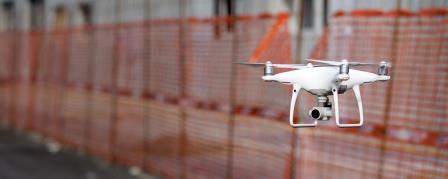

Printable PDF version
Subscribe to our newsletter
Mass Timber Construction
AI in Construction
Tariffs & Escalation
Construction
Management Specialists
111 Pine Street, Suite 1315
San Francisco, CA 94111
(415) 981-9430 (San Francisco office)
6518 Lonetree Blvd., Suite 164
Rocklin, CA 95765
(916) 742-1770 (Sacramento office)
8910 University Center Lane, Suite 1100
San Diego, CA 92123
(619) 814-6793 (San Diego office)
8538 173rd Avenue NE
Redmond, WA 98052
(206) 571-0128 (Seattle office)
2063 Grant Road
Los Altos, CA 94024
(650) 386-1728 (South Bay office)
7083 Hollywood Blvd., 4th Floor
Los Angeles, CA 90028
(424) 343-2652 (Los Angeles, CA office)
78 Heathervue, Greystones
Wicklow, A63Y997, Ireland
+353 86-600-1352 (Europe office)
www.TBDconsultants.com
Timber is moving up in the world. Once limited to housing and other low-rise construction, timber is being utilized in mid-rise and high-rise buildings, and here we look at the technology driving this change.
AI (artificial intelligence) has been moving into business and our private lives in a big way recently (think Siri and Alexa). The construction industry has been a late adopter of the technology, but even here the pace is picking up, and new uses are being thought up.
At the design stage, AI systems can suggest design options for specific situations, review documents for things that might be missing, carry out clash detection, speed up the cost estimating process even at early conceptual stages, and start the construction scheduling process, among other things. One of the advantages AI has is that computers can process a lot of options in a short period of time and compare the results without any preconceived biases.
During construction, AIs can take control of construction plants in various ways including; driving excavators and brick- or CMU-laying machines, monitoring construction sites looking for deviations from plans and for safety violations (such as workers without hard hats), maintaining and updating the construction schedule, and monitoring subcontractors. We hear a lot about autonomous cars these days, but they drive on well mapped streets. A construction site is constantly changing, so an autonomous excavator would need to have its map constantly updated and an AI can do that using images and 3D scans from drones and/or other imaging systems.

Post construction, AIs can monitor the building occupancy to economically control the internal climate, and using building sensors connected to the Internet of Things (IoT) they can recommend maintenance work, warn of potential failures, and in the event of a catastrophe (such as an earthquake or hurricane) can send emergency services to areas of the buildings where they are most needed.
Unlike traditional computer programs, AI systems need to be trained, and to do that they need a lot of related data that they can sort through to establish patterns and arrive at viable solutions. IBM’s Watson supercomputer was given a lot of data that it used to win at the TV quiz game Jeopardy. It was then put to a more practical use, diagnosing cancer patients and initially it was getting good reviews. More recently it has been criticized for recommending dangerous treatments for some patients, and it turns out that this was largely due to it having learnt from a relatively small number of cancer cases. It would be an exaggeration to say that this was a case of “garbage in – garbage out”, but it does show the necessity of a substantial quantity of good data to work from.
There are multiple ways that companies are collecting data today, and new ones, such as scanning and photography from drones, are becoming more common. All of this data can be useful for AI systems, but obviously the larger companies are the ones that will have more data, and will therefore be the ones that can benefit most from AI technology. One possible solution to this dilemma, might be if government departments, professional institutions, or similar organizations involved in construction could coordinate the collection of data and share it.
Naturally there are fears that AI will take away people’s jobs, and we have seen headlines that talk of 500,000 jobs being lost in the construction industry to such technologies. On the other hand, construction workers are in short supply anyway, and AI has been making its way into other industries for quite a while, and do we see unemployment rising or being at record low levels? We know it is the latter. The type of work is certainly going to change, with a need for companies to implement methods for employees to develop new skills, but history indicates that technology change does not take away jobs. In fact, companies developing AI systems are finding it at least as hard to find staff as construction companies are.
Tariffs are making the news regularly these days, and here we look at the effects they are having on the construction bidding market.
Design consultant: Katie Levine of Vallance, Inc.